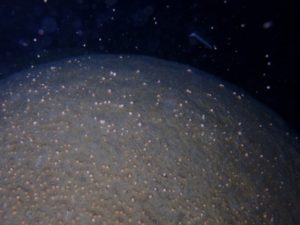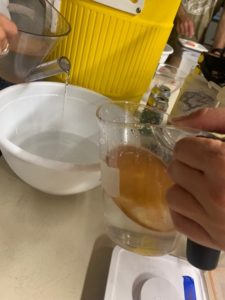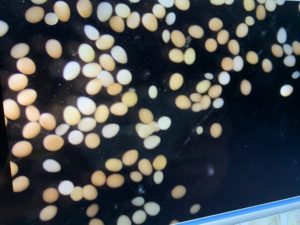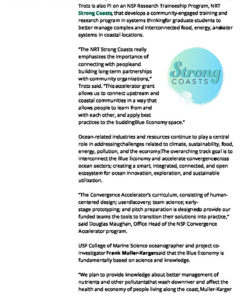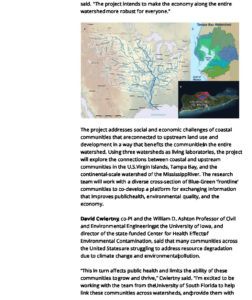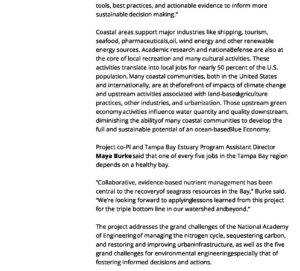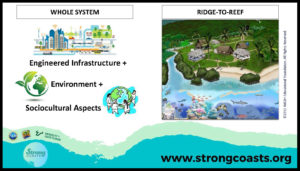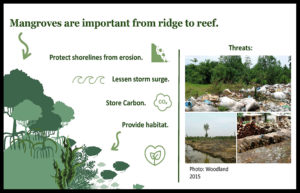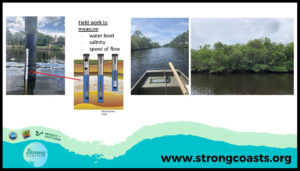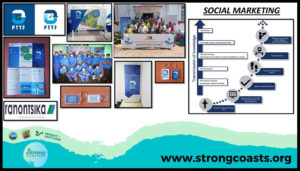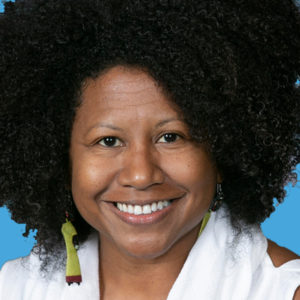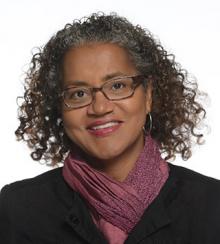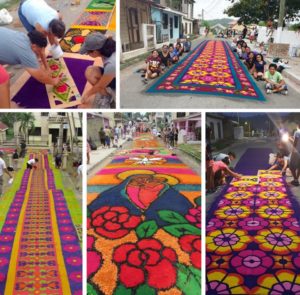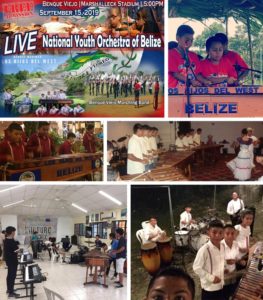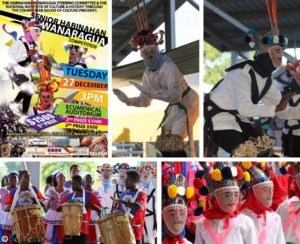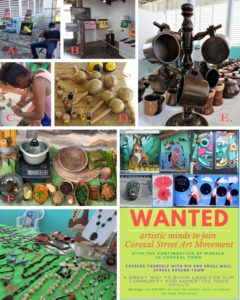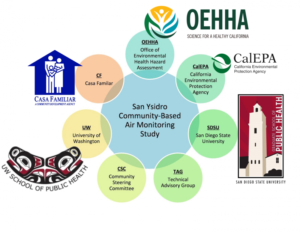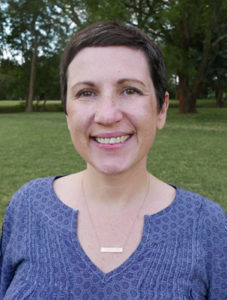One small Island with Big Sustainability Goals
By Marie Meranda
Dominica, known as the nature island, is a small (290m2) island located in the Lesser Antilles archipelago in the Caribbean southeast of Guadeloupe and northwest of Martinique. I work in Dominica as an anthropologist studying underwater and environmental archaeology, concentrating on the period of European contact, and looking at anthropogenic impacts into the modern era. In recent years Dominica has begun a major push to become the world’s first “climate resilient” nation. It is being used as a model to show how countries around the world can adapt to climate changes, limit the use of fossil fuels, and create sustainable end ecological friendly tourism. This blog will discuss some of the implementations and rationale behind this push for climate resilience.
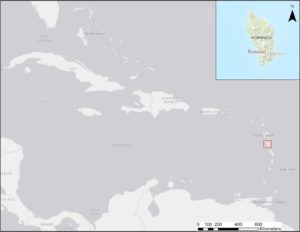
Figure 1. Map of Dominica in the Greater Caribbean. Image created by the author.
Natural setting
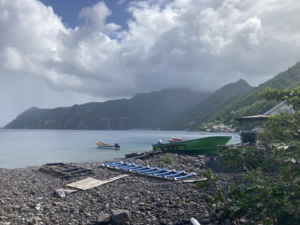
Figure 2 image of Soufriere Bay, located at the southernmost point of the island. Image taken by the author.
The island has rightfully earned this nickname with jagged cliffs, steep mountains, 365 rivers and countless waterfalls, volcanoes, hot springs, and lush rainforests. The island is not well-known as a tourist destination despite boasting some of the best scuba diving in the world and countless nature hikes. This is largely due to its lack of large beaches, which draw millions of tourists to the Caribbean annually. However, there has recently been a push to increase eco-tourism, focusing on the island’s unique natural beauty, promoting ecofriendly resorts and adventure tourism.
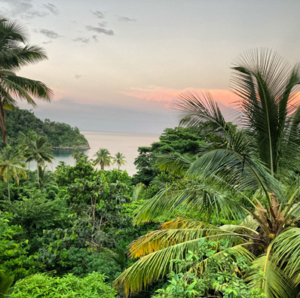
Figure 3 image of Toucari Bay at sunrise. Image taken by author.
Field project 2021
Dominica is the subject of my dissertation research and in July 2021, a small team went down to complete terrestrial survey work, using a drone and GPS units to map in the coastline, erosion and record some previously unidentified sites. This was an unusual field season due to the country going into a COVID-19 lockdown during our time on the island. This changed the scope of the work we were able to conduct, and I began to think about Dominica’s response to the pandemic and how they are responding to climate change. Since the onset of the pandemic, the island closed its boarders to outsiders, not opening them again until June 2021. This response kept cases remarkably low and due to the island’s inhabitant’s lack of reliance on tourism, they were not impacted as badly as other tourism dependent islands in the Caribbean. Dominica is striving for self-sufficiency and climate resilience in the face of climate change. They are seeing these impacts with regards to increased storm activity, erosion, and rising sea-levels. Our archaeological project is intertwined with these environmental impacts, in fact, the site we work on was only discovered in 2017 in the aftermath of hurricane Maria and is part of an effort to document submerged and coastal sites that are quickly disappearing.
Natural Resources
The mountainous terrain is both daunting and sustaining for is 71,000 inhabitants. People live in “coastal enclaves” around the perimeter of the island (Trouillot 1988) with the interior largely untouched. The rich tropical atmosphere is conducive to growing fruits and vegetables. Local stores do not sell many fruits or vegetables, with street vendors and weekend markets being the main source of fresh produce.
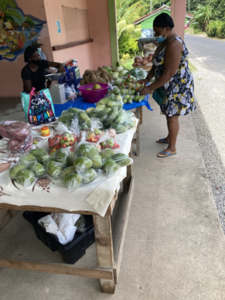
Figure 4 Saturday morning market, Calibishie. Photo by author.
Provisions such as breadfruits, yams, cassava, plantains, and dasheen are a culinary staple on the island. Dominicans are very connected to the land and almost every house has a garden with trees growing limes, avocados, and mangoes. Fish is another natural resource of abundance around the island and is a common protein source. Stews are a common dish made with locally grown vegetables and either fish or chicken. Many of the local fishing vessels are still made from local woods on the island and built in a tradition dating back hundreds of years. Recently there has been a renewed interest in prehistoric canoe building and ethnographic studies have taken place to reconstruct dugout canoes from the Gommier trees (see https://www.avirtualdominica.com/project/gligli/ for mor information).
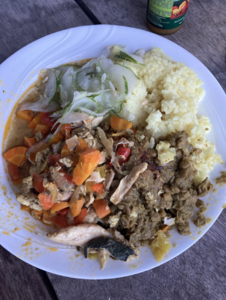
Figure 5 Homemade fish stew, photo by author.
The economy is largely agricultural with the largest export being bananas with well over 30 varieties. Banana farming began on the island during the 19th century after the end of the plantation era and replaced Dominica’s failed sugar industry. Attempts have been made to diversify the agricultural market with citrus, coffee, cocoa, rice and distillation of essential oils.
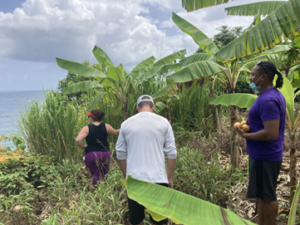
Figure 6 Surveying for archaeological sites through banana fields. Image by author.
Dominica has an abundance of freshwater from its many rivers and high annual rainfall (~300 inches). Rivers supply the main source for drinking water, irrigation, and hydropower. Additionally, the island’s significant forest cover helps assure an abundance of freshwater. The water is supplied through a catchment system using small weirs, where the water is chlorinated, however these is no control for turbidity and after heavy rainfall sediment and muds get churned up and the water supply is shut off until the sediments settle. Improvements are being made to use rapid sand filtration systems to avoid water shut off. However, many residences have rain barrels for use when water shut offs occur.
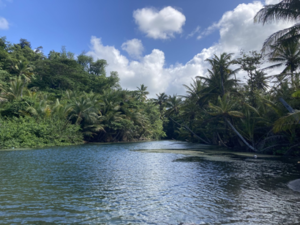
Figure 7 One of Dominica’s many rivers. Image by author.
Ecotourism
Ecotourism has been identified as one of the main areas where Dominica can diversify its economic growth. The island is striving to conduct responsible tourism with no international hotel chains. All accommodations are eco-friendly and have sustainability in mind. Our field accommodations, SeaCliff Cottages, use solar power to heat water, and run the fans and lights while propane is only used for the stoves. All organic materials are composted which is then used in various fruit and flower gardens. The bottles of the local beer, Kabui, are returned at stores across the island for reuse, reducing glass waste.
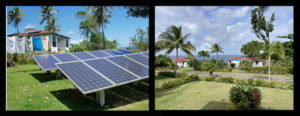
Figure 8 SeaCliff Cottages. Images by author.
Push for renewable energy
Despite Dominica’s green thumb, the island still largely relies on imported fossil fuels. The 2008 financial crisis was a wakeup call for Dominica as fossil fuel dependence increased vulnerability to price and supply fluctuations. This realization prompted a focus on sustainable energy initiatives. Today, Dominica is at the forefront in the use of renewable sources of energy among the Organization of Eastern Caribbean States (OECS), having achieved 28% of its present electricity generation from hydropower and wind with three hydroelectric plants on the Roseau River. They are working towards the development of climate resilient homes and infrastructure for sustainable growth, which is largely being funded by a Citizenship By Investment (CBI) program.
The Clean Energy Environment Dominica drafted an energy plan in 2014 with the goal of using sustainable sources for electricity to be self-sufficient by 2020. Although the Covid-19 pandemic has slowed these efforts, the island is still working towards self-sufficiency. Dominica is a participating member of the Caribbean Community’s Caribbean Renewable Energy Development Program. Investments of $20 million have already been made to develop the island’s geothermal energy potential in addition to the solar and wind energy sources that have already proven to have high potential for satisfying energy needs. A geothermal plant is already under construction which aims to generate 7MW of clean energy which would bring the island to getting over half of its energy supplies from renewable sources. The plant is expected to become active by 2023.
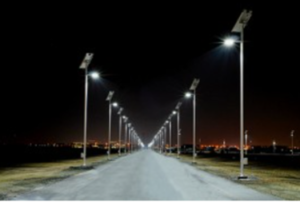
Figure 9 Solar powered streetlights in Roseau, Dominica.
In 2021 Dominica and the UAE-Caribbean Renewable Energy Fund (UAE-CREF) announced a $50 million dollar deal for a hurricane-resistant clean energy project. This will involve the development of a megawatt battery storage system to help the island with recovery post-hurricane events. Additionally, the island has converted all streetlights over to either wind or solar power, cutting down on unnecessary energy spent in a place that has an abundance of both wind and solar energy. It is small steps like this that make a big difference in long-term climate resilience.
For more information:
https://www.nrel.gov/docs/fy15osti/62704.pdf
https://www.energy.gov/sites/default/files/2020/09/f79/ETI-Energy-Snapshot-Dominica_FY20.pdf
About the Author. Marie Meranda is pursuing a PhD in Applied Archaeology and a graduate certificate in Geographic Information Sciences at the University of South Florida. She earned a bachelor’s degree in Anthropology and another in Humanities: Liberal Arts at the University of Tennessee at Chattanooga. Afterwards she worked as an English teacher in Spain as part of the North American Language and Culture Assistants Program before beginning an M.A. in Maritime Archaeology at the University of Southampton, United Kingdom. Upon completion she worked in the fields of maritime and terrestrial archaeology across the southeast United States, Guatemala, Italy, Bulgaria, and Dominica. Her dissertation research focuses on European colonization of Dominica in the Caribbean and its socioecological impacts to the landscape.


